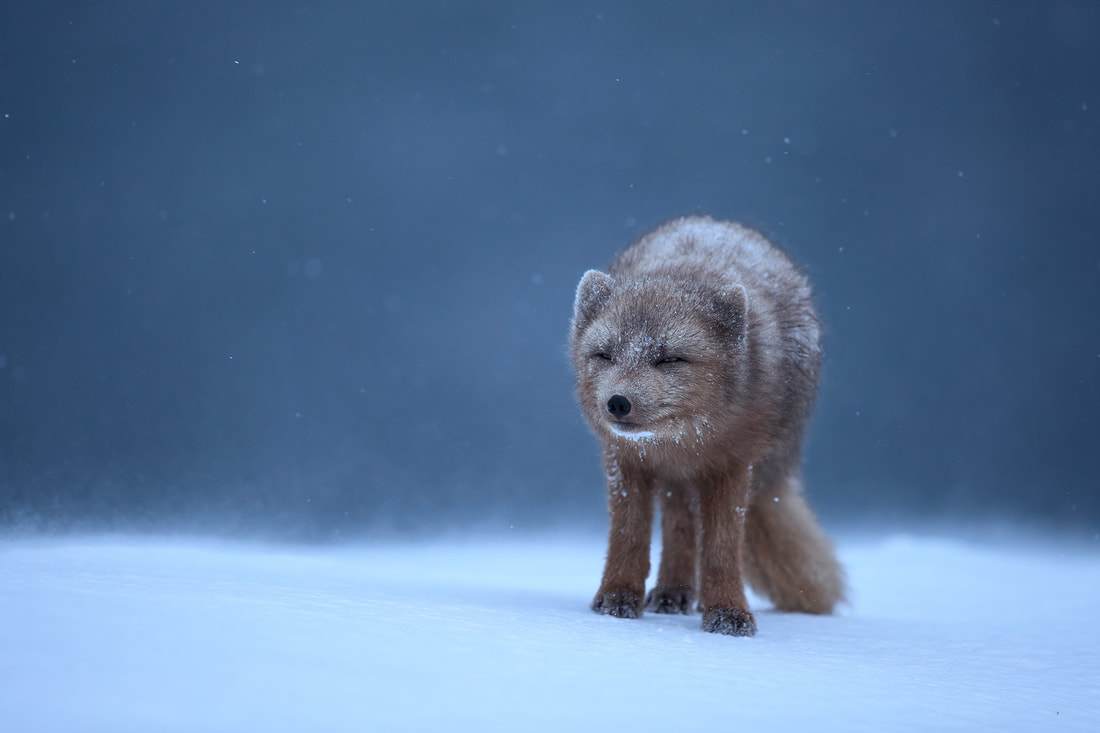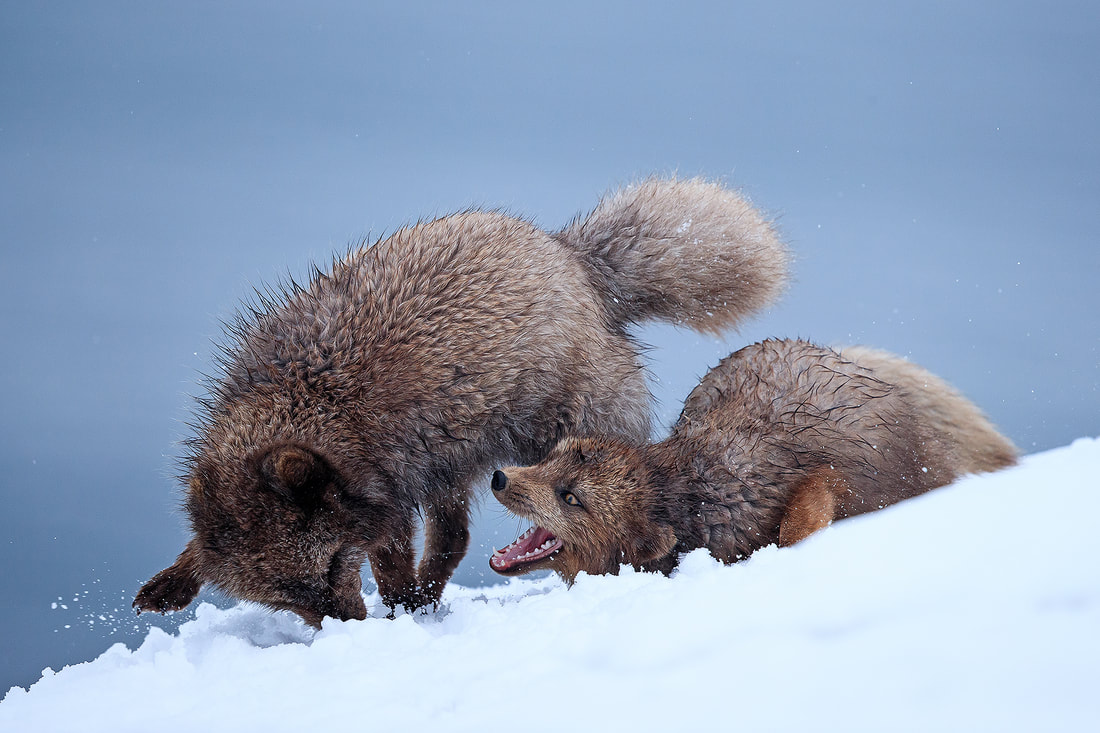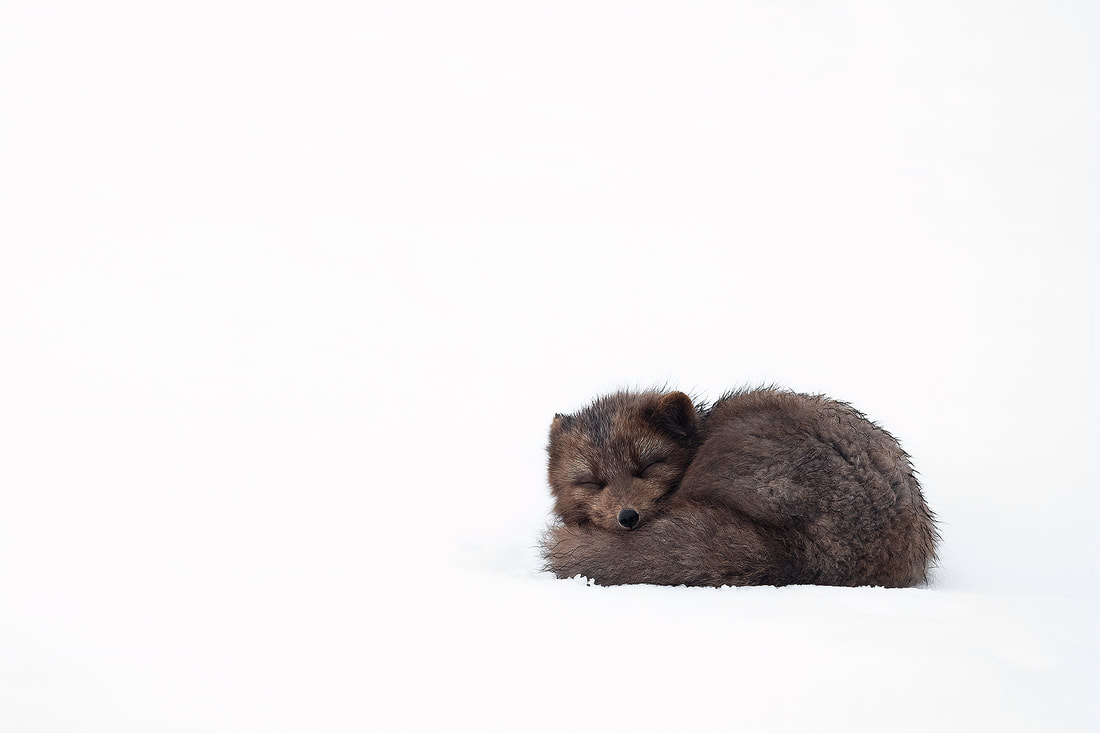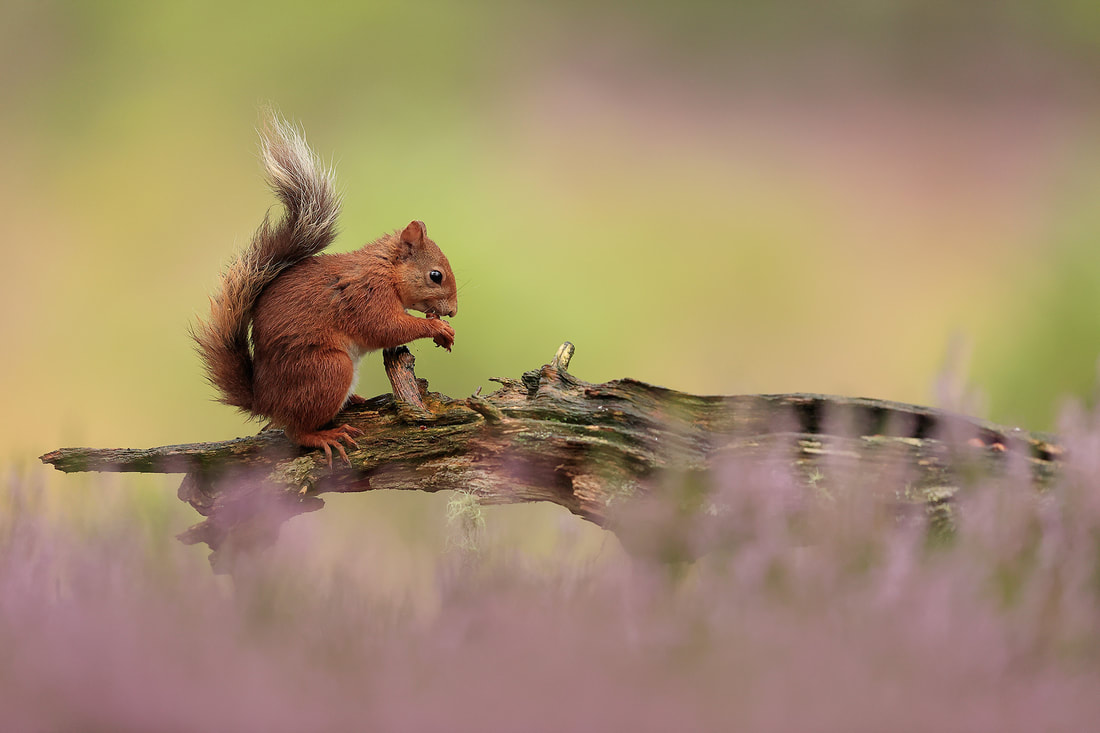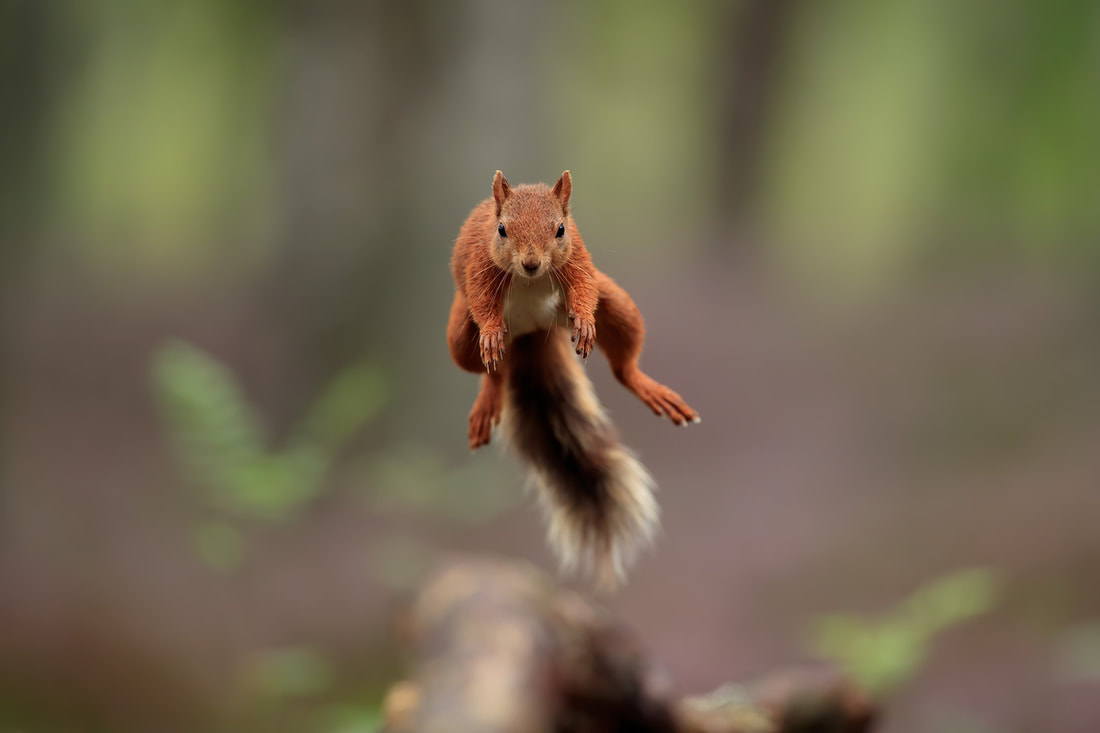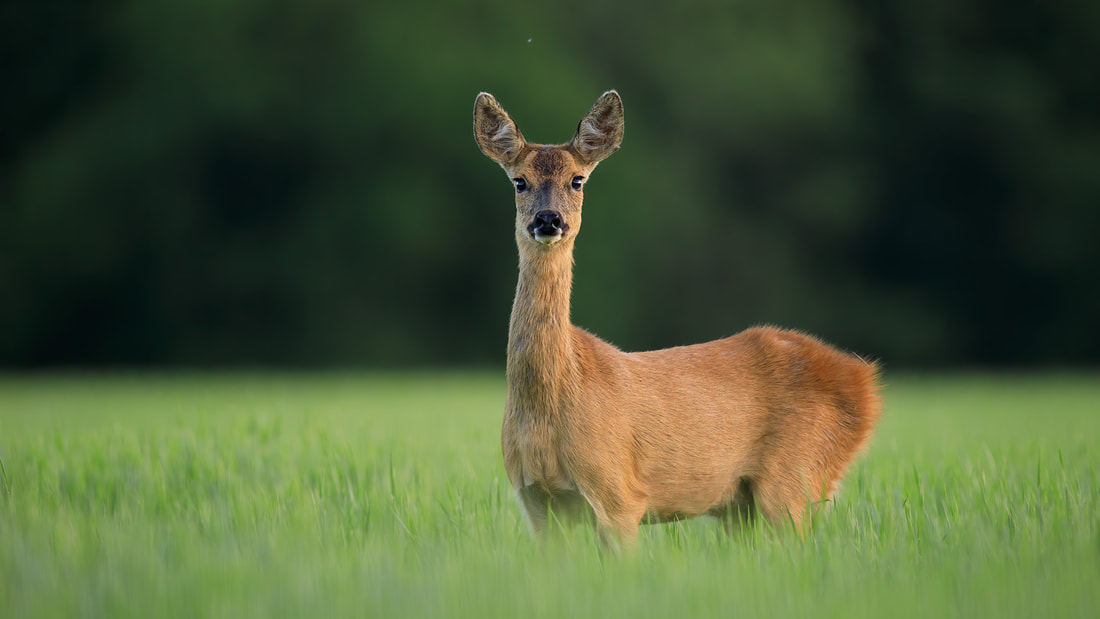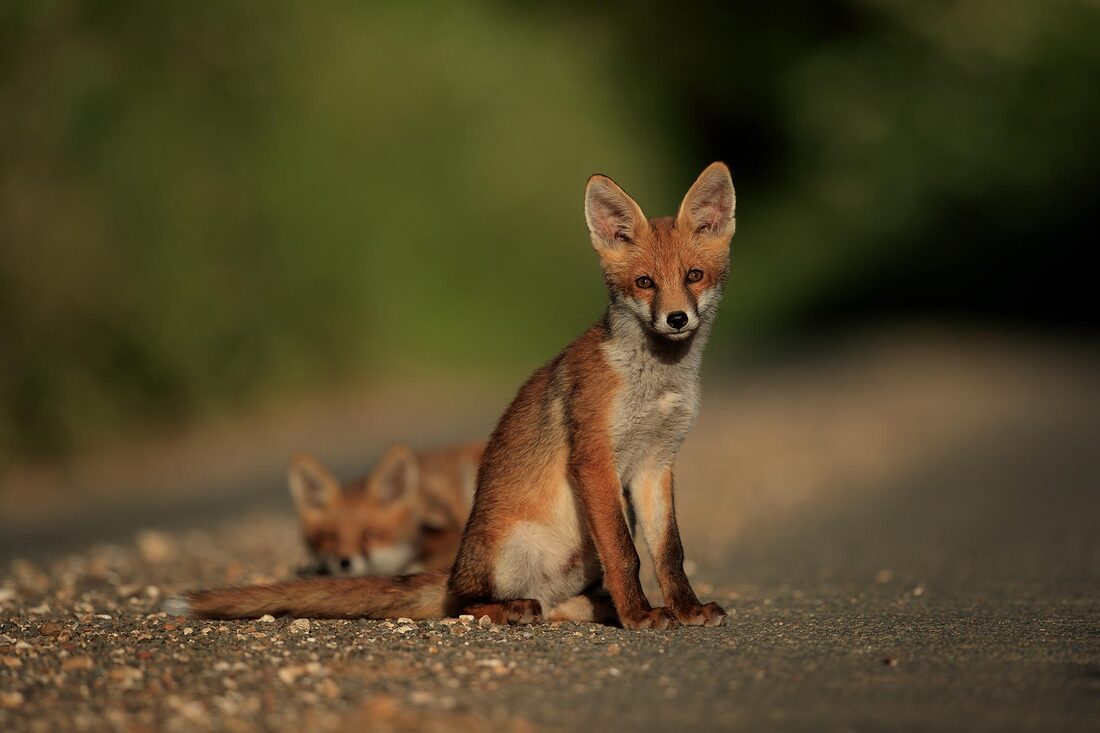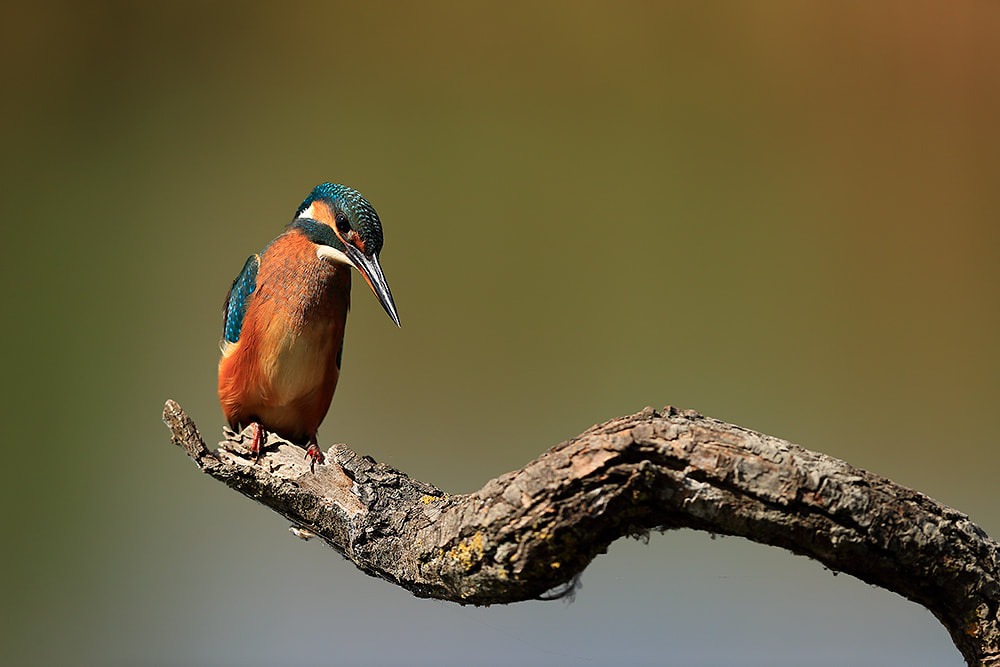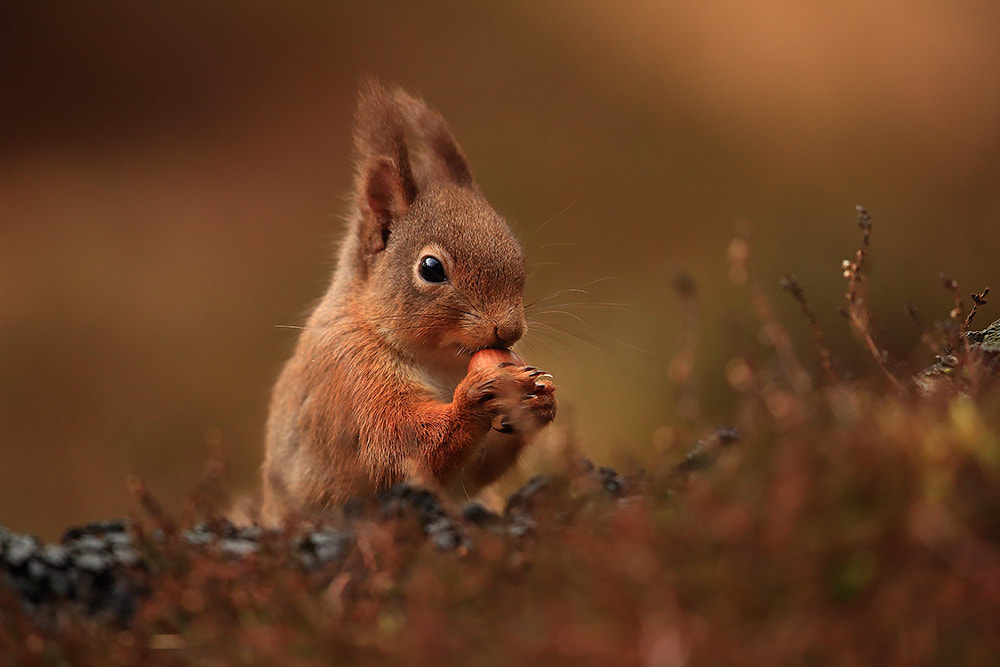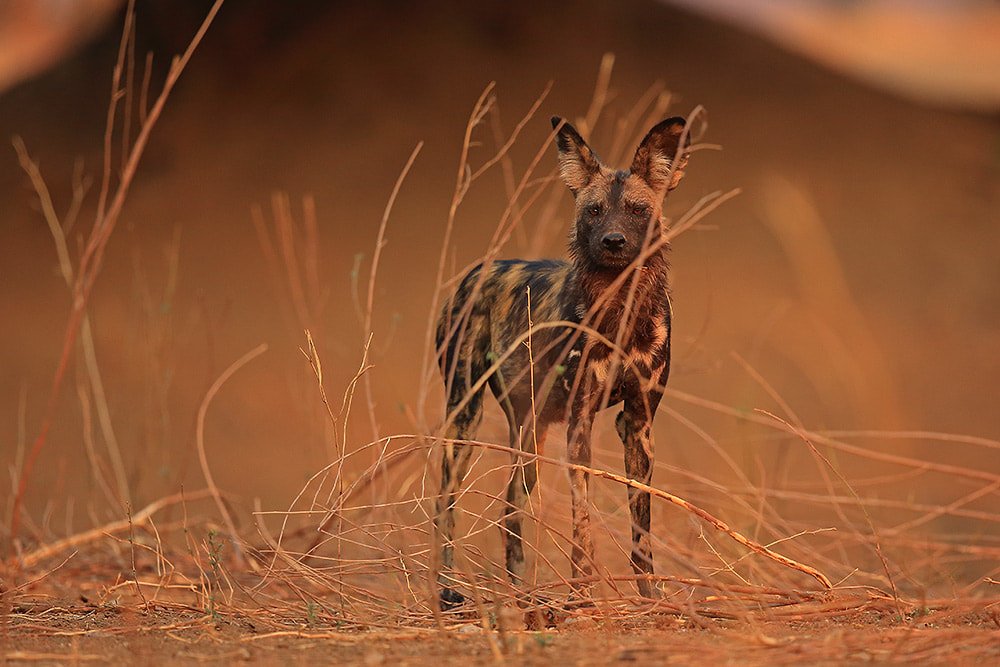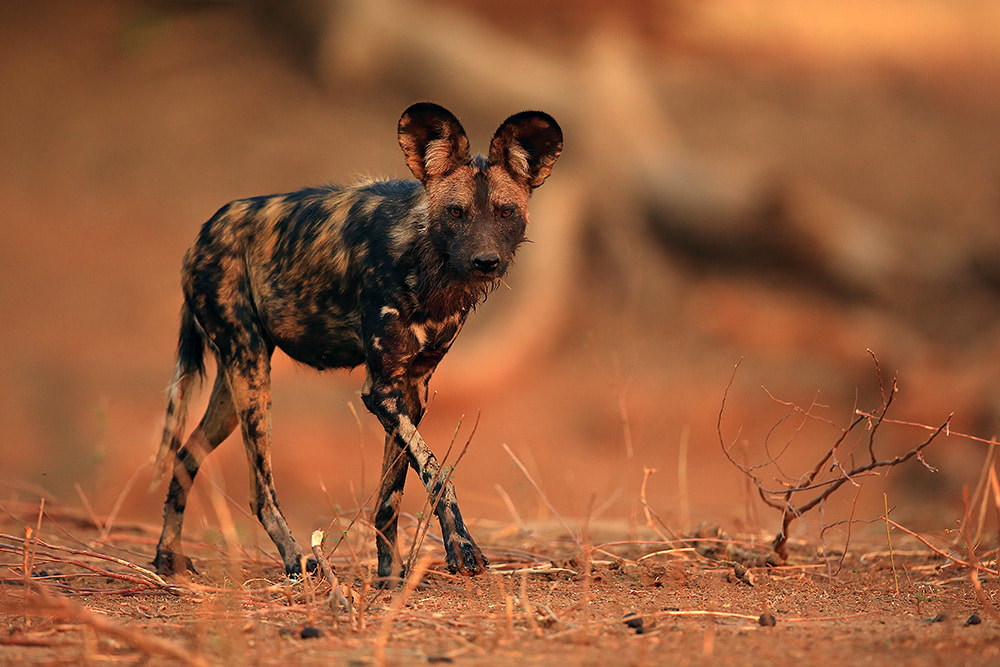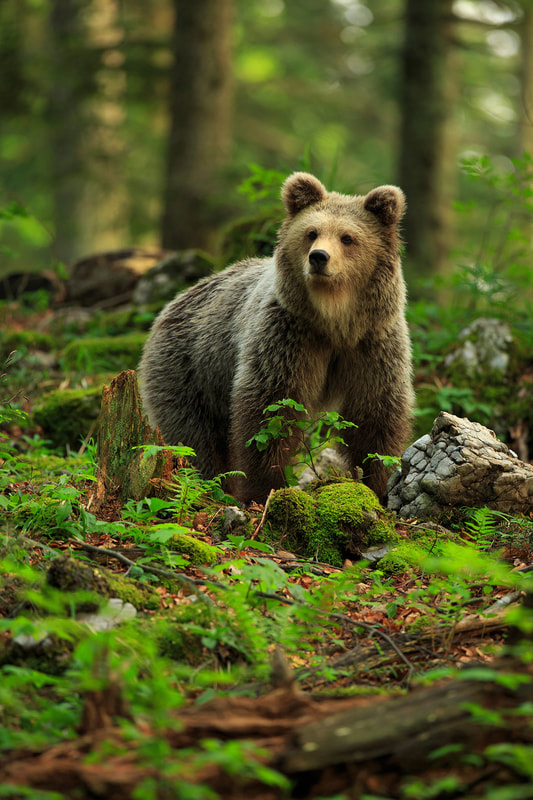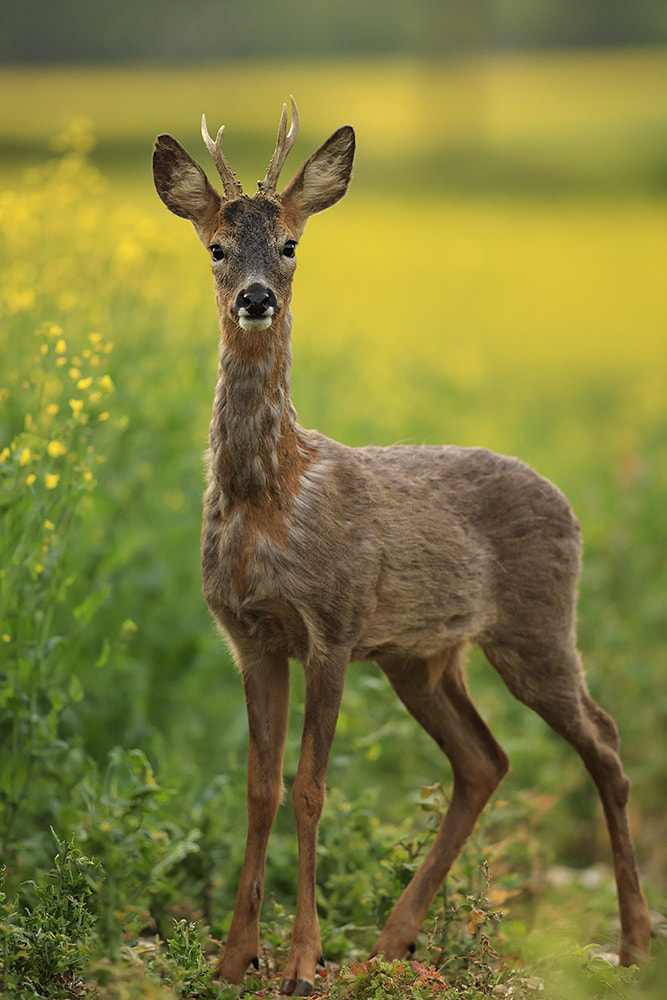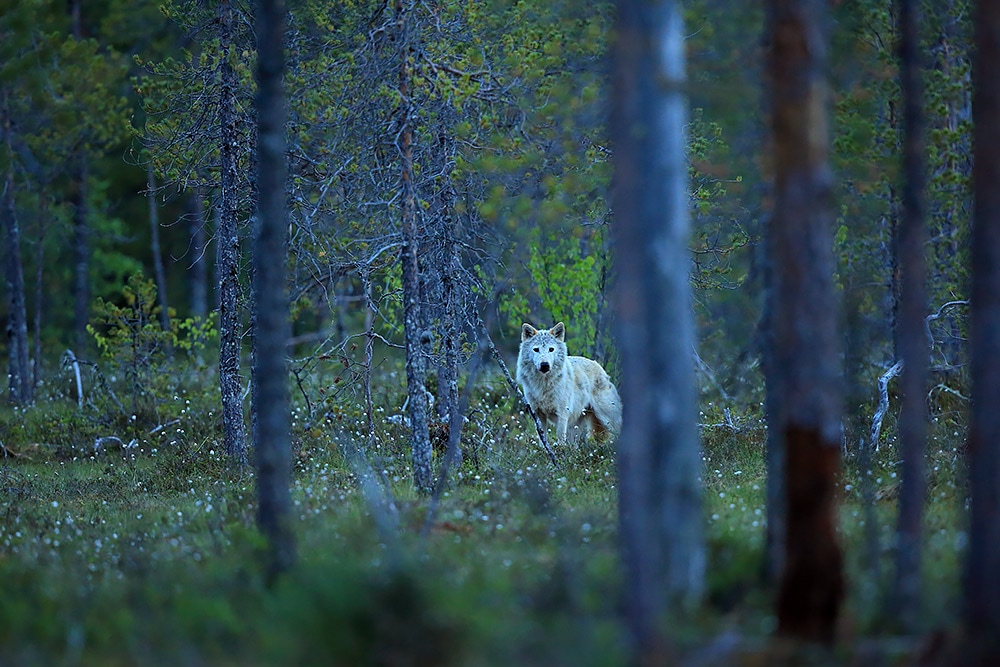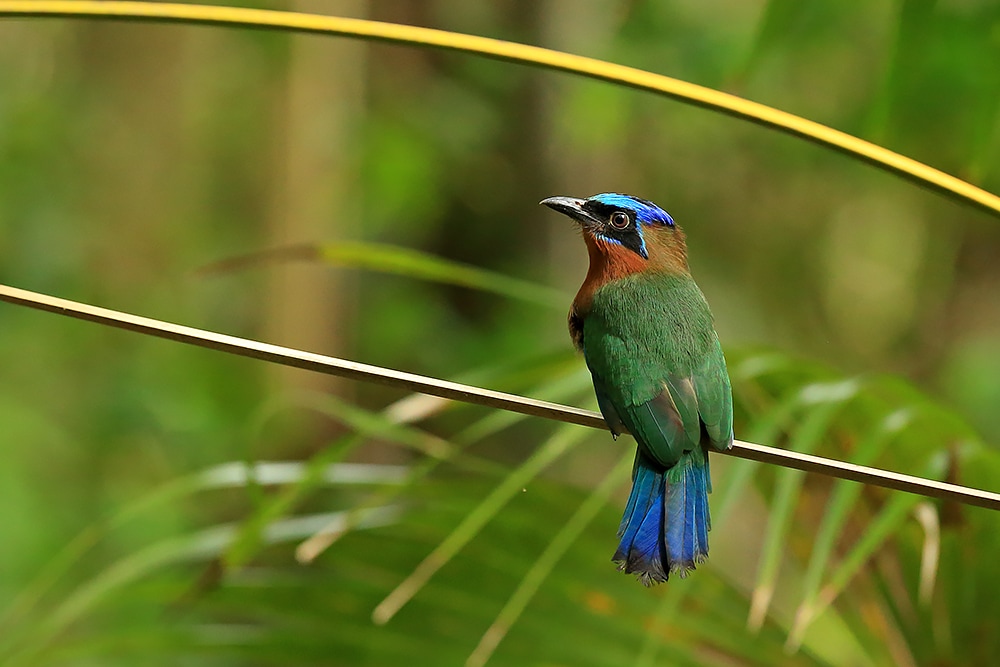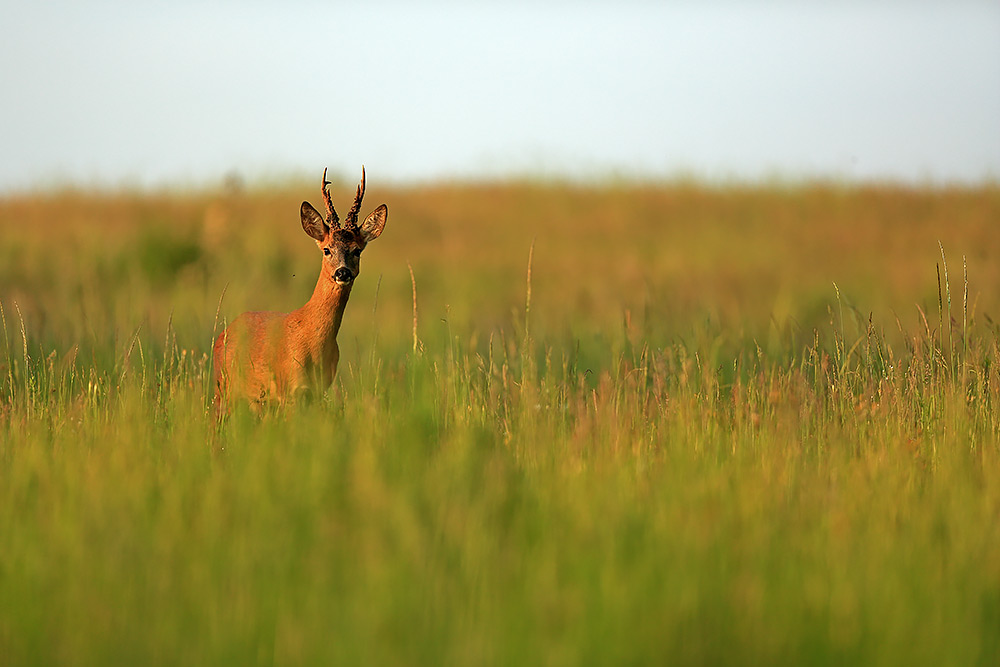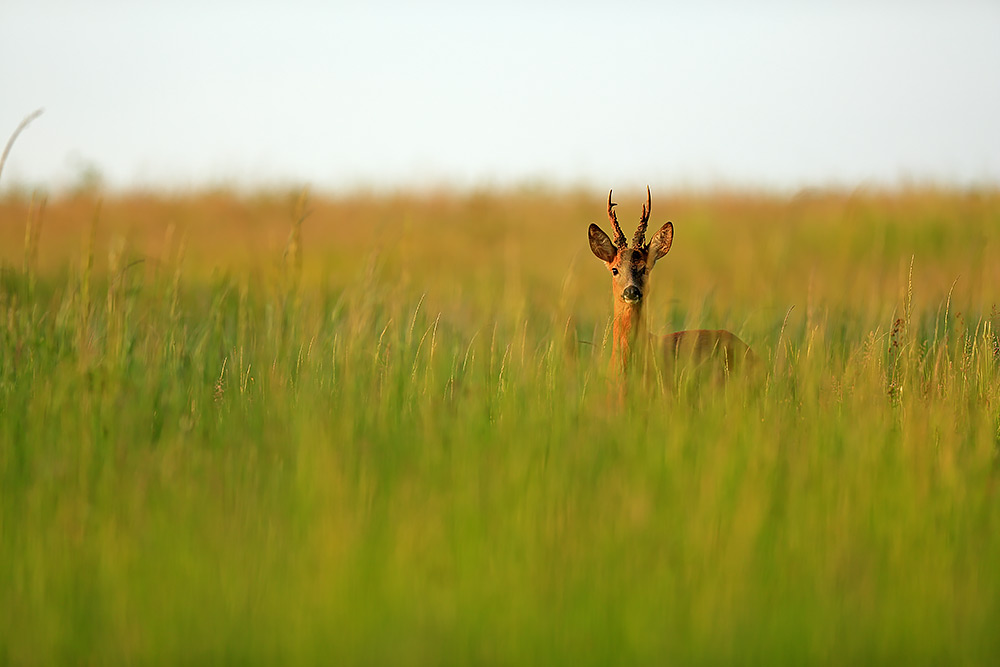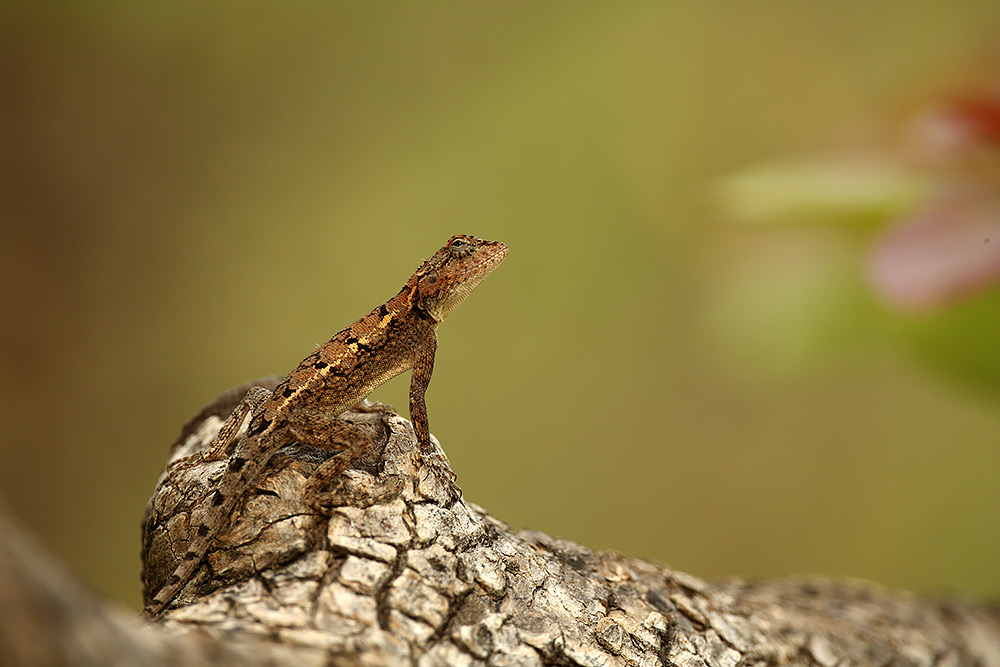|
This year, I was planning to have a break from leading our Iceland - Arctic Fox Photography tour, but at short notice I was called up to lead the tour. And so I found myself with the group in Reykjavik, before our onward flight to the town of Ísafjörður. There was a slight issue - a massive winter storm was hitting Iceland's northwest and we were stuck in Reykjavik. After two nights in Iceland's capital, we decided to make the journey north by road. What an adventure we had as we made our way through blizzards and an epic snow-covered landscape. The following morning we made our way across to Hornstrandir Nature Reserve and we finally got to spend a couple of days with the wonderful Arctic foxes. Here is a selection of my favourite shots from this year (including some particularly obliging ptarmigan). Most foxes in this part of Iceland are blue morph and white individuals are actually a rarity. Therefore, we were absolutely delighted when this white fox made a brief, but close appearance. Throughout our time in the pristine surrounds of Kviar Lodge, we were blessed a whole range of weather conditions which allowed everybody to build up a wonderful collection of images. Although a little unexpected, it was a delight to be back in Hornstrandir Nature Reserve. The foxes are always an absolute delight and we couldn't have asked for more from our brief time there. Join me in 2025 as I return once again with Wildlife Worldwide.
0 Comments
Back in March I led the inaugural tours for Wildlife Worldwide to Hornstrandir Nature reserve in the remote north-west of Iceland. Staying at the delightful Kviar Lodge, our sole focus here was the blue morph Arctic fox on our Arctic Fox Photography tour. Coming face-to-face with an Arctic fox has long been on my wishlist, particularly after seeing them in the wilds of Svalbard many years ago. The lodge is situated on an uninhabited peninsular, over 40 km from the nearest settlement and only accessible by boat. Our voyage from Ísafjörður was not the smoothest, but on arrival a fox was running along the high snow bank above to greet us. It doesn’t really get any better for a wildlife photographer. I led back-to-back trips in this spectacular landscape and enjoyed some of the very best photography opportunities I have enjoyed for many years. My clients were spoiled with all sorts of weather conditions and countless moments to capture some breathtaking imagery. Here is just a taster of what we enjoyed … As you can see, the first day was pretty wild with incredibly strong winds and a few snow storms. Although the photography was challenging, it was also particularly rewarding. The weather was very changeable, as you would expect in Iceland during March, but that enabled us to photograph the different foxes in a host of different conditions. The photography was exceptional. I was able to use my phone to capture some wonderful images, that's how obliging they were ... We were also treated to a marvellous display of Aurora borealis and all my first group were able to capture some stunning imagery. But of course the primary focus was the Arctic foxes. Here is a selection of images from the second of the two departures - we really were incredibly lucky with the weather and the cooperative wildlife. I hope the photos above have whetted your appetite - if you would like to join me in Iceland to photograph these charming foxes, there is still space remaining in March 2023. You can register your interest here.
Richmond Park is one of the jewels in the Royal Parks' crown, a wildlife haven in the heart of one of Europe's largest conurbations. Red deer, little owls, badgers and even ring-necked parakeets. I spent numerous weekends journeying up the A3 early to photograph the red deer rut, meeting friends and enjoying the cool autumnal air - the photographic opportunities were excellent. As you can see, the photographic highlights are not only limited to the red deer that call the park home. Above you can see an image of a jackdaw, arguably one of the UK's most beautiful corvids and a ring-necked parakeet (an introduced species from the Indian subcontinent). The deer stags are well known for thrashing their antlers in the bracken, and other undergrowth, when they are pumped full of testosterone. In this case, he took it all a little far and then struggled to see where he was going. This individual stag was not one of the dominant males, and he will probably have to wait another year or two to reach his absolute prime. As you can see from the images above, the red deer often stand proudly as the sun rises over the horizon, seemingly basking in the soft morning light. It was a great few weeks enjoying the wilder side of London and as long as you avoid the crowds, you can expect to see some spectacular behaviour. Next year, if I get to lead my planned tours (if Covid allows), then I won't be able to photograph this annual spectacle.
After lockdown eased here in the UK, I went for a little adventure to the Scottish highlands. This stunning mountainous realm is home to a range of wildlife I don't find in Hampshire, including the red squirrel, crested tit and capercaillae. I spent a day in a hide on the Rothiemurchus Estate, built by Neil McIntyre, photographing the gorgeous red squirrels in the stunning heather-filled Caledonian forest. Although I only spent the one day with the squirrels, I was easily able to capture a wide range of imagery, of which these are just a few.
Well who expected 2020 to be like it has? It has been a year of change, uncertainty and anxiety for many, but the natural world goes on and I have tried to spend as much time as possible out photographing the roe deer once again. I may have not been able to lead my overseas photography tours for Wildlife Worldwide, but I just love being in the field with wildlife and capturing images. I hope you enjoy looking through this year's imagery of my beloved roe deer. This year I struggled to find any males to start with, instead focusing on a number of different females who had hidden their young around the estate I photograph on. As summer intensified and the crops turned to the golden browns, the roe deer rut was in full swing and allowed me the opportunity to photograph roe bucks in their prime. I am looking forward to 2021 to hopefully spend some time with the roe deer once again. They have become a big part of my life and probably what I am best known for within the UK.
For many years I have struggled to find a family of rural foxes which I was able to photograph. Most rural foxes, and rightly so, are very wary of people and I usually don't want to disturb them. This year though, I stuck gold when out cycling, I cam across a family of foxes sunbathing on a rural lane, so I decided to head back to photograph them. Upon arriving at the site I couldn't see anything, but I decided to stick it out and I was richly rewarded ... As you can see, even a rural road gets traffic. Each time a car appeared, all of the cubs jumped into the hedgerow, taking cover in their earth and keeping out of trouble. Sadly, only a few days after I took the photo above, I found the body of this cub hidden in the hedge. It had been hit by a car and purposefully placed out of sight, it was a devastating blow and I was unable to photograph the family again - rightly so, the remaining cubs were very wary. It just goes to show the fragility of the natural world and the massive negative impact humanity has on the natural world.
My second week in Zambia was the first with my Wildlife Worldwide guests and our expert local guide was Jonathan (one of the excellent guiding team at Flatdogs Camp). We had an unbelievable week with numerous leopard sightings, but it was the lions who really stole the show. I had a fantastic group and we were lucky enough to enjoy an all-day game drive with over 30 lions seen, a leopard, countless elephant and some fantastic birds too. Rather than waffle on, I will just share some of the highlights. Enjoy! There are still a few places available in 2021 if you would like to join me in South Luangwa, you can find out more here.
Back in September I went on a trip for Wildlife Worldwide to Romania’s Danube Delta (for the first time). I had heard great things about Europe’s largest river delta and knew whatever happened, I would experience somewhere completely different to anywhere I had been before. I stayed at the purpose-built property known as Ultimate Frontiera. Specially designed for wildlife photographers , the purpose-built hides are spread across the estate and provide the opportunities to photography a myriad of different species. On my first morning in the hides I was hoping to photograph the pygmy cormorant, an elusive and rarely seen species. I did get a couple of shots of pygmy cormorant, but it was a common kingfisher that proved to be a real delight, posing perfectly in front of the hide only a few metres away. I have tried photographing kingfishers in the UK and never had any luck, whether it be from purpose-built hides or sitting patiently on a river bank. So, finally, to be rewarded with shots like this was a real treat. It wasn’t just kingfishers that proved to be particularly cooperative, we were treated to some great views of little owl, a wide variety of small woodland passerines, squacco heron and great white pelicans. We were even luckier in the fact we got to see a solitary Dalmatian pelican, of which there are fewer than 2,000 left in the world. It also proved to be a particularly reliable place to photography golden jackal, which are moving further west into Europe each year.
It was a great place for anyone with a passion for bird photography, and I can only imagine that during the spring it is full of life. I highly recommend you join Wildlife Worldwide in May to get your very own Romanian bird photography fix. I hope you like the pictures – and don’t forget to head off to Romania and see it for yourself! I explore an area of the South Downs National Park which is rich in wildlife, with a wide variety of species. However, red fox are a species which are particularly hard to photograph in rural areas and here it is no different. I have been trying to find a fox den for years, but without any luck. At the start of May I was walking down a track which is rarely used. The grass was already high and bending over the tyre marks, but there some fifty yards away was a fox cub. At first I thought the poor thing must have passed away, but as I crept up to where it was, I noticed it was breathing. I sat back and watched it shuffle a couple of times, trying to get comfortable and so I slowly made my approach. To my astonishment, the fox cub stayed fast asleep, the ears didn’t even twitch as I crept ever closer. Eventually I was probably ten yards away and I just sat there watching. What an incredible privilege, what joy I had over the next fifteen moments or so. o edit. Eventually the cub woke up, realised I was a potential threat and trotted off into the woods. I knew at this age the cub couldn’t be far from the den so I headed up into the woods and within minutes I had found the earth. I sat and waited by a nearby tree and was then treated to the following close encounter. I will never fully be able to comprehend the close approach of one of four fox cubs that evening, but it was an encounter that will stick with me for a long time.
Earlier this year I was asked to help out on Wildlife Worldwide’s photography trip to the Cairngorms, which was focused on the region’s population of red squirrel. These charming little mammals, the only native squirrel species within the UK, are an absolute delight and within a few days the whole group had built up a stunning array of images.
As I was only really there to assist James Shooter, I didn’t take all that many images, but at least it gives you an idea of the wonderful opportunities on offer and James is a great host/leader. I hope you enjoy the following images and be sure to join the 2020 departure with James. If you ask me where I feel most at home, there is only one answer and that’s ‘Africa’. So, why Africa I hear you ask? Well, quite simply, it is home to some of the world’s finest wildlife, wonderful people and stunning landscapes. Well recently I went to Mana Pools National Park in Zimbabwe, while leading for Wildlife Worldwide, and I can honestly say that my life has changed forever. That is the second time I have said that after a trip to Africa in the last year and I stick by it. Mana Pools has become synonymous with the African wild dog (or painted wolf) as per the BBC’s fantastic Dynasties series. In fact, I spent 8 days in the park following the star of the show Blacktip and her pack. It is possible to go on walking safaris in Mana Pools, which is just like many other parks (particularly in Zambia), but here the wildlife can be very approachable and the wild dogs are especially habituated to people on foot. On top of that there are few elephants that are particularly special and allow a wonderfully close approach. Anyway, I won’t rattle on too much more. Here are the highlights from the first couple of days … The first encounter with the dogs was definitely one of the most frantic. Just as I approached the dogs with my group, the whole pack got up and started to try their luck hunting a herd of impala. All hell broke loose and we somehow ended up right in the middle of it. At one point we were surrounded by around 10 dogs as they tried to panic the impala into a mistake. The next morning we found the dogs in almost the same spot as where we left them, and they allowed even closer approaches. When you struggle to fit your subject in the frame it is always a good day ... After a fantastic morning in Mana Pools the evening proved to be even better. We found the pack fairly close to where we left them, they were enjoying an afternoon siesta. Not long after we arrived, the dogs started to wake and start their bond renewal routine. African wild dogs are one of the world's most social species and the level of their communication skills are far beyond our understanding. We watched the whole pack greet one another and play in wondrous orange light.
Mana Pools is one of those places that gets under your skin and I hope that this overview of my time there inspires you to go for yourself. Join me in 2019 and discover the next chapter of Tait's & Blacktip's Dynasty - Mana Pools: Wild Dogs & Elephants Photography. It has been a crazy few months for me – I have been leading trips left, right and centre. No moaning from me though as it has been absolute delight to take so many fantastic people all over Europe, showing them some of the most incredible wildlife and hopefully helping them get some great images too! The next instalment in this summer’s schedule was a trip to one of my favourite spots, right on the Finland’s eastern border with Russia. It is here I lead Wildlife Worldwide’s Boreal Predators Photography tour, which gives my clients a chance to photograph European brown bear, grey wolf and the feisty wolverine. All I can really say about this year’s tour was wow, wow and well… WOW! We were treated to a remarkable number of sightings of all three species and the photography opportunities were mesmerising. Even with a faulty camera I was able to capture some awesome images, my clients images really blew me away so it was a hugely successful trip. And now to the photos, all I will say is that I hope you enjoy them… It must be said that every night in the hides was productive and they allowed the entire group to capture a wonderful array of images. What I have included here are just a small taster. I have only included on wolverine as I was always in a hide that didn't have the prime views. It is very important to me that my clients are the ones who get the best images, after all it is their holiday and I want them to get the most out of the experience. On the last night of the trip the whole group were treated to some breathtaking sightings and unrivalled photography opportunities. The images above (I think at least) perfectly demonstrate why Finland is such a superb destination for a photography holiday. The light is absolutely brilliant, the wildlife is stunning and the photography is very hard to beat.
So if you fancy joining me in 2019 for another foray into the boreal forests of Finland, be sure to visit Wildlife Worldwide's website for more information. My first photography tour of 2018 was to the beautiful country of Slovenia. In the middle of May, I took 8 clients with me to the Dinaric Alps, where everyone was hoping to photograph brown bear. This was Wildlife Worldwide's Brown Bear Photography tour. Now I need to make something clear from the start, Slovenia is one of Europe's hidden gems. It is a country filled with history, stunning landscapes and fabulous wildlife. To top it all off, the food is fantastic. Slovenia's Dinaric Alps, in the southern reaches of the country, are home to between 700 and 800 bear, one of Europe's most important populations. This karst landscape, filled with caves, disappearing rivers and lakes, also supports and array of other species including Ural owl, beech marten and even wolf. This trip was focused on the bears and the Ural owl, with of course the stunning mountains, wild flower meadows and charming villages as a wonderful backdrop. Over the course of the next 6 days we were treated to some superb encounters and all of the clients managed to capture some excellent images. After a great first night in the hides we went in search of the Ural owls and were blessed with some great encounters. Slovenia is home to the highest density of breeding Ural owl in Europe, so with a bit pf persistence, you can often come away with some good photography. The karst limestone landscape is famed for its caves and Slovenia is no different. If you read my last blog post on Slovenia (from last year), you will have seen that I visited Križna jama - a beautiful cave filled with water. We journey a few kilometres underground and explore the remarkable caverns and their unique rock formations. Of course, for most people it is all about the bears and that was this unique trip is all about. So all of the group spent the majority of their afternoons in the hides, waiting for the bears to show themselves. As you can see from all of the images above, Slovenia offers something very different from other bear watching destinations and it really is quite magical.
If you would like to join me on this amazing trip in 2019 then please head over to Wildlife Worldwide and find out more. As many of you will know, I live on the edge of the South Downs National Park. This is the UK’s newest national park, a range of stunning hills and rolling farmland, and is home to staggering number of roe deer. I have become pretty good at photographing roe deer and luckily for me, I can often see them right behind my own house. In mid-May I noticed a handsome buck as I arrived home from the office and spent around 40 minutes trying to work out my approach. The wind had been swirling and it was nearly impossible to get close enough as there was a real lack of cover. Eventually, I was able to get within 20 yards and the deer ended up approaching me – the perfect scenario. To start with the male deer was actually too close to photograph, his inquisitive nature meant he approached to within only a few yards. I stayed perfectly still, the deer alert to my presence watched me, but never tried to run. It slowly moved away and into the dense crop of oilseed. As you can see, I was blessed with a very cooperative buck, standing beautifully in the yellow flowers of the oilseed crop. It wasn't the longest photography session, as the deer decided to slowly move away into the deepest part of the field, but I managed to capture some beautiful imagery in the short time I was there.
All of the images were taken on my 500mm lens, which is usually perfect for photographing roe deer. A land of countless lakes and seemingly infinite forests, Finland is one of Europe’s wilder corners. In recent years the country has become well regarded as the finest bear watching location outside of the Americas. However, I had heard of a particular location (right on the Russian border), where it was possible to see and even photograph European Brown Bear, Wolverine and even Wolf. This place sounded too good to be true! So after a lot of digging and hours of reading through reports, I had all of the information I needed. In the end I decided it would be a great place to run a wildlife photography tour with Wildlife Worldwide. We have named the tour ‘Boreal Predators Photography’ and it certainly lived up to its name this year. Towards the end of June I set off with 6 eager clients, all keen to photograph the iconic species of this border region, or ‘no man’s land’, between Finland and Russia. Now I must start by saying that Finland hasn’t really had a spring in 2017, and therefore all the wildlife’s behaviour has been particularly unpredictable. We spent a total of 4 nights in the hides, all of which were different. This year was particularly cold, which makes it much harder to get comfortable within the hides, but our perseverance paid off in the end. The first night was a little disappointing with only a couple of bears seen at a bit of a distance, one of which was particularly nervous. Don’t get me wrong, it is still incredible to see the magnificent mammals, it was only disappointing from a photographic opportunity point of view. The second and third nights made up for it though, with at least 4 different wolverine spotted across 3 locations (the group had to be split on the second evening), the very nervous bear made another appearance and the icing on the cake had to be two Grey Wolves seen on both nights. On the second evening, a client and I were treated to a pair of Wolverine – the light was at its worst when they appeared, but we got a few acceptable shots in the end. Just as we thought the evening was coming to a close, it was probably around 3 am, I noticed a light shape moving on the edge of the forest. It was obscured by a light mist, but there was no mistaking what we had in front of us. It was a Grey Wolf … in fact there were two wolves. It was a magical encounter, a real privilege and a challenge to photograph in such low light and the mist. It was the last night of the trip when everything really came together. We were only going to be in the hides until around midnight as we had to leave first thing for our flight back to Helsinki. I decided we should try our luck at the pond, where I had previously seen the two Wolverine and wolves. I can honestly say that the evening was one of the very best I have had in my career. The light wasn’t necessarily the best, but the sightings we had are some of the finest anyone could possibly ask for. In fact, the evening actually started relatively slowly. It all seemed like it might be disappointing end to the trip. As the sun was losing its strength and retreating over the tree line, one of my group spotted a large bear moving through some marshy ground. It was heading right at us, slowly powering through the swamp. You could hear the strength of every movement, it was absolutely incredible. The bear posed perfectly for us and the whole group managed to get some wonderful shots. Having had its fill on the salmon scraps left out, the bear slowly made its way back towards the forest, slowly melding into its wooded surrounds. Having had such a remarkable encounter, everybody seemed to be settling back into their seats (figuratively speaking), when I noticed a familiar light shape on the edge of the treeline. I stopped myself from saying anything, took a breath, then raised my binoculars and my jaw slowly dropped. I knew what it was, but I didn’t really believe we could be so lucky. Surely I was suffering from sleep deprivation? There some 70 yards away was a white wolf, the one I had seen at a distance on the previous two nights, and it was followed by a second wolf. The white wolf was the female, whilst the second was tan colour, and this was the male. The female slowly made her way towards the hides, seduced by the smell of the fresh meat of a carcass. The next 15 minutes were spellbinding. She came to within only 20 metres of the hide … it was her size, her obvious power and that stare that left me breathless. I have never known a stare like it. I have been all over the world, photographing Polar Bears, Leopards and Tiger, but never has an animal looked at me with the same intensity or intelligence. This really was a once in a lifetime encounter and one that will stick with me for the rest of my days. If you would like to join me in Finland, I will be leading another ‘Boreal Predators Photography’ tour with Wildlife Worldwide in June 2018. I can’t promise the tour will be the same as this year’s, but I can guarantee it will be a great adventure.
For the entirety of this trip I was using a Canon 500mm F4 IS II USM lens which was kindly provided by Fixation. I will be writing a separate post with a review and my thoughts on using the lens if the field. The small country of Slovenia is home to some of Europe’s most stunning vistas, from the towering peaks of the Alps, the picture postcard city centre of Ljubljana, to the forest covered hills and mountains of the Dinaric Karst. It is when you dig a little deeper, exploring the country’s sprawling forests that the true magic of Slovenia is properly revealed. These wonderful forests, a mixture of pine and beech, hide some of Europe’s finest wildlife – a population of brown bears. With the help of Slovenian Bears, it is possible to spend your evenings enjoying fantastic bear encounters from the comfort of purpose-built hides. I spent the vast majority of my time in the Notranjska region, home to the country’s core population of bears, but the area is also filled with incredible caves and other features typical of a limestone karst landscape. I managed to explore the incredible cave network of Križna Jama, travelling up to 4km along the water filled passages, and the delights of Lake Cerknica, the largest intermittent lake in the world. The beautiful meadows are filled with wild flowers, including an array of delicate orchids, the copses are alive with the sound of birdsong while in the forests the call of the Cuckoo resonates through the trees. For the lucky few, an encounter with the striking Ural Owl is certainly one of the region’s avian highlights, with up to one pair every square kilometre this surely one of the best places to see them in Europe. In reality though, I went to Slovenia for the bears. With between 400-700 bears in this small country, there is a very good chance that you can have superb encounters over the space of a few days. I have to admit I was unsure of what Slovenia would be like for bear watching and particularly in regards to the photographic opportunities, but I needn’t have worried … my 5 nights flew by with countless bear sightings. Sitting in the comfort of the hides, waiting and willing for a bear to appear through the sea of trees is a thrill in itself. Every noise has you on the edge of your seat, a crack of a twig – it must be a bear? No, it is just a family of Jays bounding across the forest floor. The alarm call of a Blackbird rings loudly in your ears, but still no bear appears. But then, in complete silence the first bear comes into view, a young bear tentative in its approach, aware of those watching and waiting in the hide. After a few minutes though the youngster relaxes and goes about its business, only pausing to check that there is no immediate danger. After a few minutes the bear’s ears go up, the nose starts to twitch and the eyes focus on something I cannot see. Then over a rocky outcrop, two more bears appear, both with a golden hue to their coats and walking purposefully towards the hides. Now three bears are within only 20 metres of the hide, the two new arrivals keeping their distance from the first individual and all of them ignoring the deep thud of camera shutters firing as they go about their business. This was just my first evening in one of the many hides on offer, and what a great introduction it was. I hope to be heading back to Slovenia later this year to try my luck again, so you can expect another flurry of images over by the autumn. Here is an array of other images captured during the following nights. If you are thinking of a long weekend away filled with wildlife (particularly bears), I can highly recommend this beautiful and welcoming country.
I am already planning a return visit to the area and hope to operate a photography tour in 2018 with Wildlife Worldwide. Last year was one of great change for me … after spending a year photographing in Australia, it was time to get crack on with my career and put photography on the back burner. Don’t worry - the photography will be back in force in 2017! I had built up an incredible portfolio of images in 2015, thanks to my time ‘down under’, and I decided to try my luck in a few competitions. It turns out I had some success – who would have thought that would happen? Well I was delighted to have images shortlisted in Outdoor Photographer of the Year, Bird Photographer of the Year and Australian Nature Photographer of the Year. The two images shortlisted in Bird Photographer of the Year both featured in the accompanying book and my image Murray Magic featured in the Kew Gardens exhibition. When I got the news that three of my images had made it through to the final of Australian Nature Photographer of the Year, I was excited but didn’t really think too much of it. It wasn’t until a friend (the incredibly talented Trevor Scouten) alerted me to the fact that these three images were actually going to feature in the exhibition, and accompanying media, that it really hit home. In June I was contacted again by the competition, informing me I was either a winner or runner up in one of the categories I had entered. I learnt no more until the results were announced in the press – I found out through the Australian news that I was a winner of the ‘Threatened Species’ category with my image titled Palm Grove Dingo. The image has since been used in the accompanying book, wall calendar, desktop calendar and diary. The image was then used at the main entrance of the exhibition – printed in large format … this for me was the greatest honour. It wasn’t all about the competitions though. I had a great year of travel once more with trips to India, Tobago and Colombia. None of which were necessarily exceptional from a photographic point of view but I did strike lucky on a few occasions (you can see a selection of images below). 2017 promises to be another great year for me with trips to Africa and Ecuador planned for my own photography. I will be leading two dedicated photography trips in June, one to Skomer Island in Wales for Puffins and the other to Finland to photograph Bears, Wolverines and Wolves. I will also be running one-to-one workshops a little closer to home focusing on Roe and Fallow Deer. If you have any interest in joining me on these trips I would love to hear from you – feel free to email me at any time.
I wish you all a very happy new year and I hope to see as many of you in 2017 as possible. Since the start of spring I have been out trying to photograph my local population of Roe Deer. I have heaps of practice with this lovely species but they can still be a tricky subject to photograph. They have truly incredible hearing and a superb sense of smell ... you only have to make the slightest mistake and the opportunity will have passed. Recently I haven't had much luck as my valley has been having a swirling wind pattern. This means I have been unable to keep down wind of the deer and they smell me coming from a long way off. Finally the long, warm evenings have given me the perfect opportunity to get out and about to search for the local buck. I know the field that he likes to rest during the day but the challenge is to get close enough and stay down wind. After a few attempts I finally succeeded and had one of the best, and particularly close, encounters with this magnificent Roe Deer Buck. It was a truly wonderful encounter and what made it all the better, was that the buck wasn't at all startled and when I was done, I was able to slip off and leave him in peace.
I will be turning a couple of these images into high-quality prints which will be available in my online store. Please let me know if you have a favourite. There is one animal that elicits an emotional response like no other in the natural world. Which creature could it be? For me, and many others I know of, the Tiger has an aura, a spirit that seems to soar above those creatures around it. Don't be fooled though, this isn't the only draw to India ... it is just a case of trying to find a wild corner of this vast country to explore its natural delights. I have recently returned from a trip to India searching for Tigers and some of the stars of the Jungle Book. I had some issues along the way with cameras and park legislation but I won't go into that here. I didn't have the best trip from a photographic point of view but there were a few stand out moments which I thought I would share with you. The week started off pretty slowly and I didn't really have any sightings of any of Tadoba's standout species. However I did seem to have some better luck on the bird of prey front ... as you can see above. The my luck changed and I had an incredible encounter with a very handsome young male Tiger. Only moments after driving through the park gates we heard a sound that is comparable with that of a Lion in Africa. We heard the territorial call of the Tiger and we knew that it was heading back into the park, having spent the night patrolling the park boundary. We drove up into the park proper and stopped at the top of the hill and listened. The deep call sounded again from the forest, it was coming closer. We moved further down the road and waited for a moment that will live long in my memory, an intimate moment with one of the most striking individual cats I have ever seen. I was also really lucky with a particularly close encounter with a pack of Dhole (Indian Wild Dog), but the photography opportunities were tricky as the dogs being rather unsettled. Only moments before these images they had failed to hunt a Barking Deer, they weren't particularly keen to oblige and pose for photographs. I will be writing another post about the last few days I spent in Tadoba and going on to describe a few of my concerns too. Although I saw plenty of wildlife, I was rather shocked at some of the tourism practices within the park and the way this could directly affect the wildlife.
For now though I will leave you with a shot of this cute little fellow ... I am always astounded at the lack of knowledge regarding local wildlife, this really hit me during the annual deer rut when I said I was going to the New Forest to photograph Red Deer. People didn't believe me, saying that there aren't any wild Red Deer in the south of the UK except for on Exmoor. Well I was determined to show them that there are in fact Red Deer only a stones throw from Southampton and Bournemouth. I spent a couple of weekends searching for this native deer species and was in luck. As I reached my usual patch for the Fallow Deer, I heard a deer barking, but this was no Fallow Deer buck. This was an altogether deeper sound that resonated through the trees. I headed to the edge of the woodland, where the sound came from, and to my delight there were two large stags strutting their stuff. This was the scene I was presented with (above) and then spent the next two hours stalking the larger of the two stags and his group of females. I had to work hard and a constantly changing wind direction made life particularly difficult. The Red Deer of the New Forest are quite transient but are only found in the South Western side of the forest, sadly their population is controlled to stop interbreeding with the introduced Sika Deer found near Beaulieu. I was extremely lucky to get this close to such large wild mammals in the UK but I would like to stress this series of images took over 3 hours to capture, with long periods of stalking required.
If you see any deer in the New Forest, please don't walk straight towards them, instead make sure the wind is in your favour and keep yourself hidden. It is usually best to let the wildlife come to you, be patient and above all just enjoy what you see. |
AuthorBret Charman Archives
July 2024
Categories
All
|









